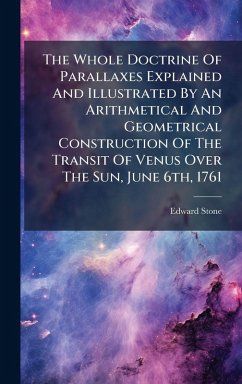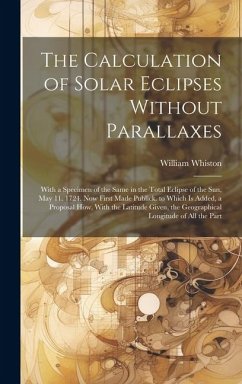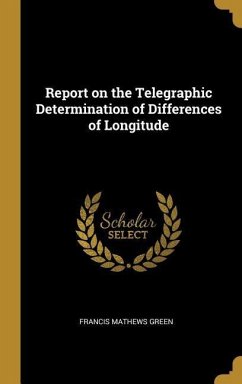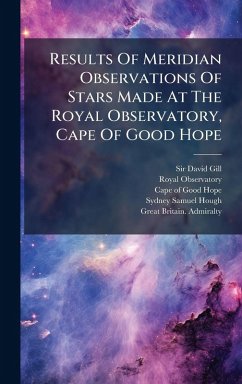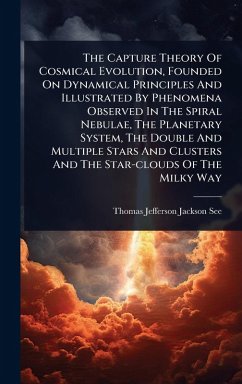
Determination of the Parallaxes of Fifty Stars
Versandkostenfrei!
Versandfertig in über 4 Wochen
29,99 €
inkl. MwSt.
Weitere Ausgaben:

PAYBACK Punkte
15 °P sammeln!
"Determination of the Parallaxes of Fifty Stars" presents the results of astronomical observations and calculations to determine the distances of fifty stars using the parallax method. This meticulous work, originally published in 1910, contributes valuable data to the field of astrometry and provides insights into the scale and structure of the universe as it was understood at the time. The study involves precise measurements and mathematical analysis, showcasing the scientific rigor of early 20th-century astronomical research. This book is a key resource for historians of science, astronomer...
"Determination of the Parallaxes of Fifty Stars" presents the results of astronomical observations and calculations to determine the distances of fifty stars using the parallax method. This meticulous work, originally published in 1910, contributes valuable data to the field of astrometry and provides insights into the scale and structure of the universe as it was understood at the time. The study involves precise measurements and mathematical analysis, showcasing the scientific rigor of early 20th-century astronomical research. This book is a key resource for historians of science, astronomers, and anyone interested in the development of our understanding of stellar distances. The careful methodology and detailed results offer a glimpse into the challenges and achievements of early parallax determination, which remains a cornerstone of modern astrophysics. This work has been selected by scholars as being culturally important, and is part of the knowledge base of civilization as we know it. This work was reproduced from the original artifact, and remains as true to the original work as possible. Therefore, you will see the original copyright references, library stamps (as most of these works have been housed in our most important libraries around the world), and other notations in the work. This work is in the public domain in the United States of America, and possibly other nations. Within the United States, you may freely copy and distribute this work, as no entity (individual or corporate) has a copyright on the body of the work. As a reproduction of a historical artifact, this work may contain missing or blurred pages, poor pictures, errant marks, etc. Scholars believe, and we concur, that this work is important enough to be preserved, reproduced, and made generally available to the public. We appreciate your support of the preservation process, and thank you for being an important part of keeping this knowledge alive and relevant.



